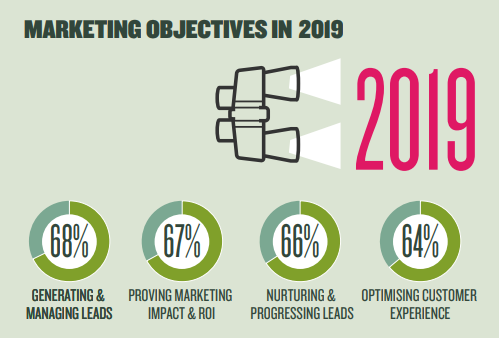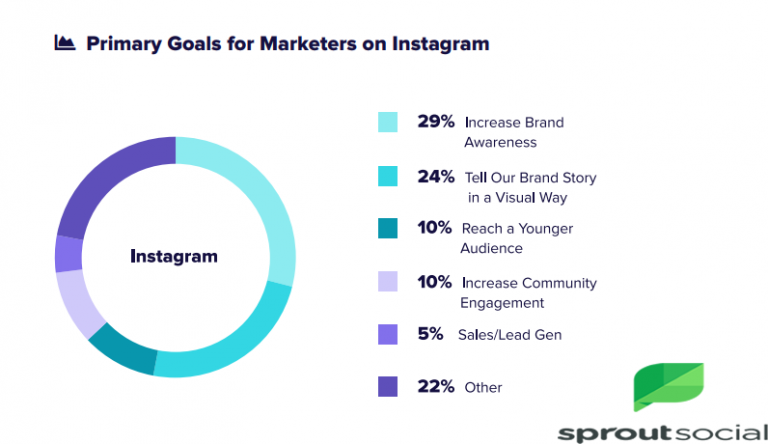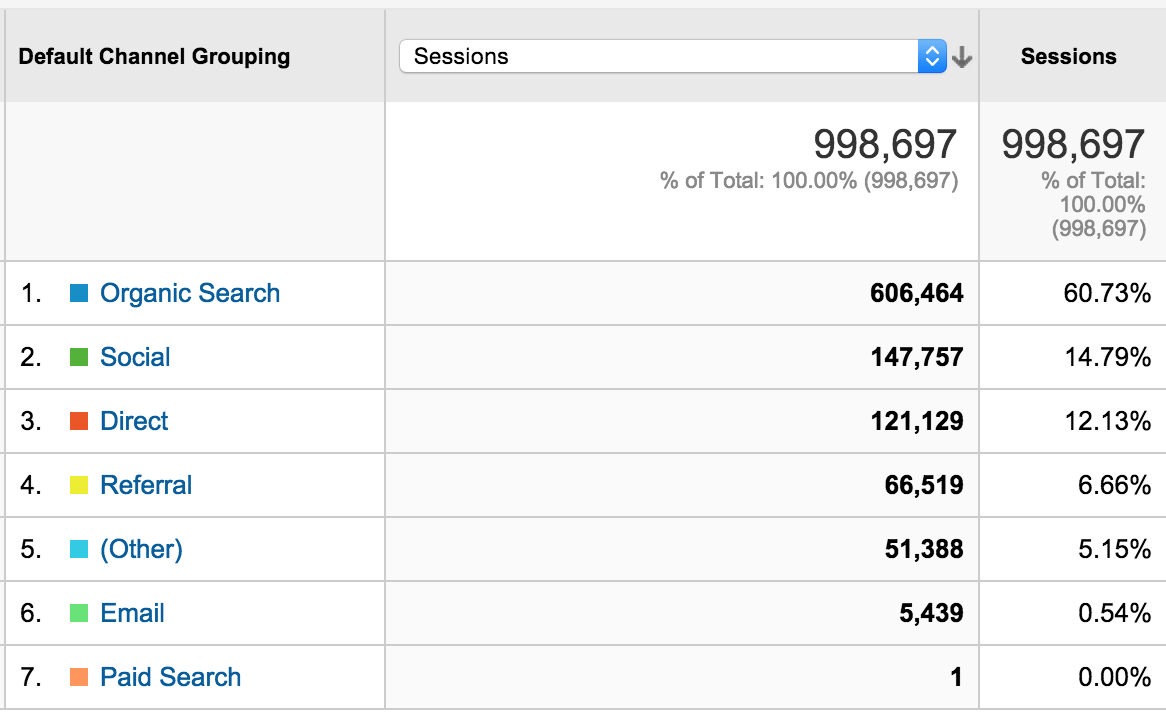A Definitive Guide to Measure and Analyze your Digital Marketing Campaign in 2022
Digital Marketing | Dec 19, 2023
Needless to say that any effective digital marketing campaign begins with setting the proper digital marketing plan which starts, in turn, with a clear digital marketing objective.
The digital marketing objective you decide on for your digital marketing campaign should be SMART (Specific, Measurable, Attainable, Relevant, and Timely). You need to think first about how they will align smartly with your overall business goals and your key performance indicators (KPIs).
The next and vital step after defining your campaign’s objective is to start projecting some nominal KPI targets, how you will measure the success of your plan, and which digital marketing metrics you will use to monitor your success.
That’s why we providing this guide contains three main parts:
- The common goals or objectives for any digital marketing or social media marketing campaign,
- The most used digital marketing metrics you need to use to measure the effectiveness of your digital campaigns and ensure that your efforts create a real impact on your bottom line.
- The best tools for measuring the success of your digital marketing KPIs.
Let’s start out a guide to stop panicking about next month or next year and start crafting a stunning plan that can pack a powerful punch.
The Most Important Goals & Objectives for any Digital Marketing or Social Media Marketing Plan:
1. Boosting Sales
It’s the top-level digital marketing objective for almost all businesses. Needless to say that businesses or brands work and keep working to boost revenue and increase the amount of money coming into their businesses.
Social media it’s becoming a more popular strategy to boost revenue with over 53% of Canadian shoppers using social media when making shopping decisions.

% of Canadian Shoppers Who Use Social Media When Making Shopping Decisions (2017 Vs. 2018)
How to Measure Sales and /or Revenue Growth:
You can track your revenue using Google Analytics. If you are using Facebook ads, you can use Facebook Pixel. If you are an e-commerce website, Ecommerce Tracking in Google Analytics might be more suitable.
In terms of metrics to track revenue growth:
- Revenue from ads: How much revenue is your digital advertising achieved?
- Signups/Revenue: How much sales/revenue is your marketing channels achieving? Or How many sign-ups?
2. Lead Generation
Lead generation is the process where a possible customer is required to fill in contact details to get more information about a product/ a service so that companies can get direct access to their potential customers to start persuading them. We can say that lead generation is just the bridge between marketing and sales. The hardest efforts rely on sales and direct marketing to persuade customers the make an actual purchase.
Lead generation is typically used by businesses with a long sales process, for instance, insurance, banking, real estate, education, IT software, and security services. It’s more likely to be used by B2B companies as it ranked at the top of digital marketing objectives for 68% of B2B marketers in Australia. Globally, generating sales leads is also ranked as the top 2018 marketing objective for B2B marketers.

Digital Marketing Objectives in Australia – 2019 Data
How to Measure the Effectiveness of Lead Generation Campaign:
Whether your leads are coming from organic traffic, paid traffic, content marketing, referrals, etc, it’s essential to track them to help shape your coming campaigns. Here are the top metrics you can use to measure your lead generation campaign’s success:
- Cost per Lead (CPL): The cost you spent per lead before they become a paid customer/client.
- Lead Qualification: It gives your insights on which particular leads you will prioritize in nurturing.
- Click-Through Rates (CTR): It tells you how relevant your lead generation campaign into a particular lead segment/category.
- Conversion Rates: It shows how many of those who clicked on your links or campaign channels actually perform a prescribed set of actions that will turn them into leads.
3. Branding / Increase Brand Awareness
How will you build up your brand image so the audiences see you the way you want them to see and conceive? This is the concept of brand awareness objective.
Brand awareness is the degree of a brand’s consciousness in the minds of its target audience.
In niches crowded with competitors, it’s critical for many businesses to plan and launch brand awareness campaigns that help them to retain and grow their market share. Brand awareness campaigns support increases in lead conversions as it can affect positively on increasing lead conversions.
It’s important to mention that 86% of companies that need to increase brand awareness, achieve it using online influencer marketing. Also, increasing brand awareness is considered the primary objective for marketers on Instagram.

A Pie Chart Shows the Primary Goals for Marketers on Instagram in 2018
Digital Marketing Metrics to Measure the Effectiveness of a Brand Awareness Campaign:
- Website Traffic.
- Organic and Paid Search Impressions.
- Advertising Banner Ad Sessions.
- Online Reviews.
- Increase in Social Followers, Social Impressions, Social Engagement.
4. Driving Traffic
Driving traffic to your website/blog is a step further from having good brand awareness. According to Buffer, 60% of marketers use social media marketing to distribute their content and drive traffic to their websites. This goal is much more likely to be created for budding entrepreneurs who start a new business.
How to Measure the Success of a Traffic-Driven Ad Campaign:
Google Analytics is the king in this case and here are some elements you need to track:
- Traffic from sources you depended on: How many visitors are coming from each source?
- The share of overall traffic: How much of your overall traffic (for instance from social media accounts)?
- The bounce rate of each source: What is the quality of the traffic from each source?

All Traffic Sources Tracked by Google Analytics
5. Boost Brand Engagement
Too many marketers busy themselves growing email lists, social media fans, and followers but ignore a basic metric that creates mobs of supporters. “It’s called engagement”. Engagement can expand your brand lift by over 300%.
According to Chief Marketer, engagement is the top social media challenge in 2019 for 65% of marketers. In contrast, engagement is the most used way to measure social media ROI.
Key Elements to Track Brand Engagement Campaigns:
- Likes & Shares
- Audience Growth/Rate of Followers
- Followers vs. Following Ratio
- Active Fans
- Clicks Per Post
- Audience Mention
Now it’s time to elaborate on the digital marketing metrics for every digital marketing campaign, the importance of each measurement, and formulas of calculation.
The Most Important Digital Marketing KPIs to Track in 2019
Key performance indicators (KPI’s) are measurements put in place to evaluate the effectiveness of a particular objective or activity. A KPI is a measurable value that describes how effectively a company is in achieving its key business objectives.
1. Digital Marketing Return on Investment (ROI)
ROI is the most significant KPI that effectively answers the question, “Is this digital stuff even working?” Not surprisingly, this is also one of the most difficult questions to answer. Failure to measure ROI is one of the top reasons that CMOs get fired, and marketing departments and agencies get restructured.
How to Calculate Digital Marketing ROI:
To calculate digital marketing ROI or even social media marketing ROI, you should be able to directly attribute new sales to your digital marketing efforts.
Digital Marketing ROI = (Total Revenue Attributed to Digital – Total Cost of Digital Marketing)/(Total Cost of Digital Marketing)

Digital Marketing ROI Calculation Formula
2. Conversion Rate
Conversion is when users complete any required action, (e.g. signing up for a trial, creating an account, filling out a form, clicking a download button, downloading an ebook, etc). Conversion is the number of anonymous visitors who become known records in your marketing database.
How to Calculate Conversion Rate:
Conversion Rate = (Conversions / Total Visitors) * 100%
Click Conversion Rate = (Converting Visitors / Total Visitors) * 100%

Conversion Rate Calculation Formula & Click Conversion Rate Calculation Formula
3. Cost Per Click (CPC)
CPC reflects the amount you pay for each individual click. It’s important when analyzing the performance of any digital marketing campaign and arbitraging opportunities.
How to Calculate Cost per Click (CPC):
Cost per Click (CPC) = (Cost of Ad)/(Total Number of Clicks)

Cost per Click (CPC) Calculation Formula
4. Cost Per Acquisition (CPA)
Cost per Acquisition (CPA) is the average marketing and sales cost of each new customer for your business. This metric can determine your digital marketing efforts’ fate.
It’s usually used when your objective is to acquire a customer as done by many e-commerce websites to track the benefit of the lifetime value of a newly acquired customer, rather than the profit made by only one sale.
How to Calculate Cost per Acquisition (CPA):
Cost Per Acquisition (CPA) = (Total Ad Spend) / (Total Attributed Conversions) OR
Cost Per Acquisition (CPA) = (Marketing Costs + Sales Costs) / $ of New Customers

Cost Per Acquisition (CPA) Calculation Formula
5. Cost Per Conversion (CPCon)
Cost per Conversion (CPCon) is more generic than the cost per acquisition. A conversion can be anything you deem it to be (for example e.g. a lead, a sale, downloading something, filling a form, someone signing up to your newsletter, etc.)
This metric determines how much it costs to convert a site visitor into an actual sale. Cost Per Conversion is related to your individual business model, and often to your individual campaign.
How to Calculate Cost per Conversion:
Cost Per Conversion = (Cost)/(Conversions) or
Cost Per Conversion = (Cost per Click)/(Conversion Rate)

Cost Per Conversion (CPCon.) Calculation Formula
6. Cost per Lead (CPL)
The number of leads alone doesn’t identify a successful digital marketing campaign. The lead acquisition costs need to be kept low so you can keep healthy margins and see significant growth.
How to Calculate Cost per Lead (CPL):
Cost per Lead (CPL) = (Total Spent on Campaign)/(Total Number of Leads)

Cost per Lead (CPL) Calculation Formula
7. Revenue per Lead (RPL)
On the other side of Cost per Lead, you should measure the approximate sales value of each new lead. This measurement will help you predict your future sales based on the expected traffic and conversion rates. It will also help you identify where your most profitable leads are coming from so that you can reinvest in those channels.
How to Calculate Revenue per Lead:
Revenue per Lead (RPL) = (Total Attributable Revenue)/(Total Number of Leads)

Revenue per Lead (RPL) Calculation Formula
8. Click Through Rate (CTR)
What Is It?
Click-through rate (CTR) is a primary metric in pay-per-click (PPC) ads that can help you gauge the results you’re getting your relevance score, and how effective your digital campaigns are. This metric can be applied to email marketing as well as paid ads.
How to Calculate Click Through Rate (CTR):
Click-Through Rate (CTR) = (Clicks) / (Impressions)

Click-Through Rate (CTR) Calculation Formula
9. Email Click-Through Rate (E. CTR)
In case you’re running an email marketing campaign, the email click-through rate metric shows the engagement of your target audience. It tells you whether your email can nudge your customers into real action.
How to Calculate Email Click Through Rate (E. CTR):
Email Click-Through Rate = (Number of Clicks)/(Number of Delivered Emails) x 100
The email open rate is also a leading indicator of the success of your email marketing campaign. It measures the number of particular interactions with an email server after sending an email expressed as a percentage of the non-bounce total.
To calculate the email open rate use this formula:
Email Open Rate = (Emails Opened)/(Emails Sent – Bounced Emails)

Email Marketing Metrics (Email Click-Through Rate & Email Open Rate)
10. Cost Per Install (CPI)
Cost Per Install (CPI) is one of the most significant metrics for mobile app owners to measure. It measures your paid installs in contrast to organic installs.
For businesses that extend their existing business on mobile, the cost per install is an important indicator of investment they need to use to include mobile into the mix of channels they use to reach out to their targeted customers.
How Can You Calculate Cost Per Install (CPI)?
Cost Per Install (CPI) = (Total Ad Spend)/(Total Installs)

Cost Per Install (CPI) Calculation Formula
Once you set your digital marketing plan and identified your main KPI’s and metrics, you need to identify a tool to help you measure each of your KPIs – for example, will you use Google Analytics to measure your conversions, or use your individual social media analytics to track engagement or any other tool (ex: BuzzSumo) to assess the success of your content marketing.
The Best Tools for Measuring the Success of Any Digital Marketing Plan
1. Web & SEO Analytics Tools
Google Analytics
Google Analytics is the king of all website analytics tools. It’s a freemium web analytics service provided by Google itself to enable you to track numerous information about traffic and other information about your website’s performance.
The basic version of Google Analytics is free, while Google Analytics 360 is a premium paid service designed for business owners who need a little more out of their web analytics.
Google Search Console
You can get great SEO reports by linking Google Search Console Tools to your Google Analytics accounts. Google Search Console is a free-to-use service that helps you evaluate and maintain your website’s performance in search results. Check for More About Google Search Console
Moreover, incorporating these tools into your SEO strategy is just one aspect of proactive marketing. This approach goes beyond merely responding to trends, empowering you to anticipate changes and adapt your strategies accordingly.
Google PageSpeed Insights
Google Algorithm considers page speed to be an important ranking factor for SEO. That’s why Google Inc. launched its Google PageSpeed Insights tool, designed to measure the performance of a page for mobile devices and desktop devices and help a website’s performance optimizations.
HubSpot
HubSpot is a great all-in-one analytics platform for inbound marketing and automation to help you measure website traffic, inbound marketing, social media channels, landing pages, calls to action, and much more.
HubSpot simple SEO tools help you monitor how you’re ranking, and how much traffic you’re getting from specific keywords.
Moz
Moz is a comprehensive analytics platform that has an outstanding series of tools in its SEO Toolbox, (for instance, Moz Keyword Explorer tool that provides keyword suggestions, SEO competition, opportunity, SERP features, and accurate data about search volume.
ClickMeter
ClickMeter’s single virtual platform helps users monitor, compare, optimize, and control all their marketing links and maximize their conversion rates.
ClickMeter Link Tracking is a complete and definitive tool that allows you to manage redirection, monitor the status of all your external links, and track events.
SimilarWeb
SimilarWeb platform enables you to benchmark your website against its competitors worldwide, discover the sources that generate traffic to any website – referrals, search, social and display, and analyze audience interests. SimilarWeb SEO services enable you to see any website’s organic and paid keywords, including ‘Google not-provided’ keywords.
There’s a free version of SimilarWeb that provides a first-hand feel for insights, besides an enterprise version provides insights and advice on the market intelligence plan that can help you grow your business.
Crazy Egg
Crazy Egg’s tools such as Heat map, Scroll map, Overlay, and Confetti helps you to track any website’s operation, visualize your visitors, and gain competitive advantages to enhance your website in a heartbeat without the high costs.
With Crazy Egg A/B Testing and Crazy Egg editing tools you can know with certainty you picked the correct content features, change or hide the styles of your content elements (e.g. colors and fonts so you can turn more visitors into customers).
Ahrefs
Ahrefs is a paid SEO software suite that contains multiples of tools for link building, keyword research, competitor analysis, rank tracking, as well as site audits. Unlike their competitors, Ahrefs ease of use and minimal navigation required to achieve your desired results is what sets it apart.
It helps you learn why your competitors rank so high and what you need to do to exceed and outrank them.
Clicky
Clicky is a complete Web Analytics tool to monitor, analyze, and react to your blog or web site’s traffic in real time. It gives you a detailed report on each segment of your visitors; allowing you to know what is working and where you need improvement. It offers a range of pricing options from free to Pro Platinum, custom pricing is also available.
Pingdom
Pingdom is a market-leading website monitoring the availability and performance of your websites or applications. Pingdom is best known for its free website speed testing tool. For beginners, Pingdom can be a great way to start.
2. Social Media Marketing Analytics Tools
AdEspresso by Hootsuite
AdEspresso tool by Hootsuite is one of the more popular social media management suite available; providing you with good real-time social media performance. AdEspresso offers real-time analytics of social media metrics, including followers, clicks, mentions, engagement, as well as the performance of your social media team in responding to visitors’ messages.
Socialbakers Analytics
Socialbakers Social Media Analytics provides a collection of free cutting edge social media tools to measure your social media performance, benchmark yourself against your competitors, plus easy multi-channel publishing and social media listening.
Socialbakers’s Social Media Analytics provides competitive insights and benchmarks to exceed your competitors.
Buffer
The outstanding Buffer tool makes it easy for businesses and marketing teams to manage all their social accounts in one place, schedule content and publish them automatically, check analytics for all your social accounts, understand how to enhance your results, as well as create reports for your manager or client.
Fanpage Karma
Fanpage Karma is the all-round-tool for powerful social media management that allows you to analyze your profiles and those of the competition, and manage all your customer conversations in one tool- even composing, planning, and publishing posts.
Rival IQ
Rival IQ is a social media analytics software that provides services to customize, schedule, and export reports that provide you key metrics to drive engagement and encourage your social media campaigns.
3. Email Marketing Analytics Tools
GetResponse
GetResponse is a comprehensive Email Marketing platform for any user. It enables you to create a worthy marketing list of prospects, partners, and clients so that you can get more opens, clicks, and sales with its professional templates, easy design tools, and unmatched deliverability.
MailChimp
MailChimp is one of the most popular names around when it comes to email marketing; offers a wide range of features that enable small, medium and large businesses to run their email marketing needs using just a single platform.
Benchmark Email
Benchmark Email tool is very similar to MailChimp. Both of them allow you to create email marketing campaigns, grow your audience using data analytics, and integrate with a myriad of other services. They also offer similar pricing ranges.
Bloom Plugin
Bloom Plugin is one of the most popular plugins from the Elegant Themes team; gives you all the tools you need to turn your website’s visitors into loyal followers and customers. Bloom Plugin enables you to build your own email list and access to a robust analytics system to track your success in converting users to your email list.
Conclusion
In many cases, the reason for the failure of any digital marketing campaign is not that the campaigns lack creativity, quality, and qualified personnel – but because of the failure in monitoring the effectiveness and performance of the campaign.
Once you get sufficient and solid analytics and measurement data available, you can now make adjustments to your digital marketing campaign to generate the insights presented by these gathered data.
While all of these metrics and tools are very useful in tracking your progress and proving the effectiveness of your digital marketing campaigns, they are actually useless if you don’t utilize them to make educated decisions about your upcoming objectives, strategies, and tactics.
Remember, don’t get too excited with every piece of data you get. Track only what you can take action on and get enough data before you jump in and make any changes.





